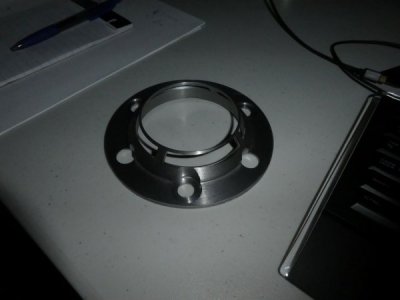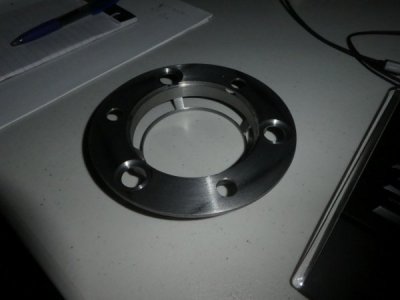- Joined
- Feb 2, 2016
- Messages
- 50
So I said I would post more details. Here they are.
Number 1 was going with cooling. I actually think that had the biggest impact. I used as mist cooler called the LilMister from Trico with Trico coolant mixed at 32-1. All of the tools I tried both Cobalt and Carbide still look new after this task
Number 2 was going with carbide. I was kind of reluctant to go with carbide as my machine can only spin 2720 RPM max.
I tried 3 tools and it didn't take me long to realize carbide is the way to go. But after this task I am a believer at least in the smaller diameters where carbide is affordable. All the tools I tried are in the third picture. as well a my two flute un-coated cobalt which was still in the mill from my first try at this. the first tool is a 1/16" 4 flute AlTin coated single ended carbide that was used to do all finishing work. I used that to take off the last 0.007" on each edge. Number 2 is a double ended 1/8 of the same. Number 3 is a 1/16 HSS that I did not even try as I was doing so well with the carbide. Those were my backups in case the carbide didn't work out. Number 4 is an AlTin coated 4 flute Coblat tool which worked very well but not nearly as well as the carbide. I also started the job with the 2 flute cobalt. That worked well but noticeably slower than the 4 flute.
There was some discussion about 2 flute being smoother than 4 flute and that was my observation when I did the first part. But in this case the 4 flute clearly out performed the 2 flute. Possibly because it was AlTin coated. I also found that using the 4 flute allowed me to rotate the crank of the rotary table at a faster rate that was more conducive to smooth motion, and with 4 flute carbide that was even better.
The comparison of the finish between the second part and the first part due show an obvious difference and I do attribute most of that to cooling as things were running much smoother with my first pass using the same 2 flute cobalt I used for the first part and it only got better with the newer 4 flute and carbide tools.
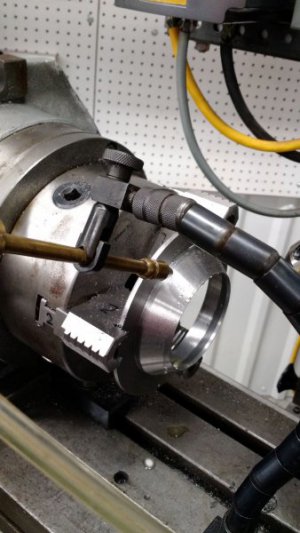
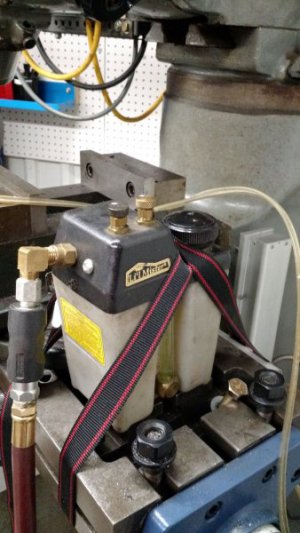
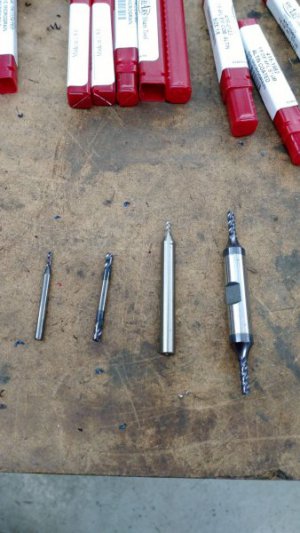
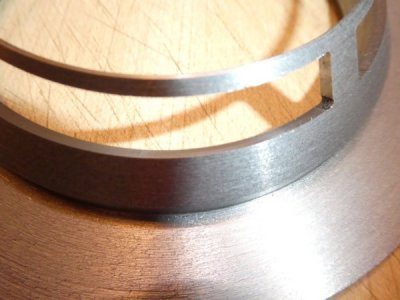
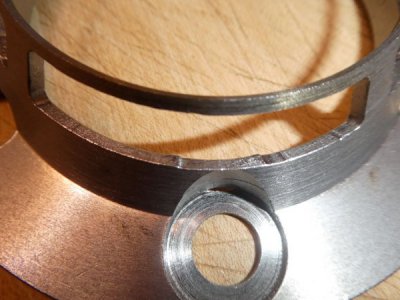
Number 1 was going with cooling. I actually think that had the biggest impact. I used as mist cooler called the LilMister from Trico with Trico coolant mixed at 32-1. All of the tools I tried both Cobalt and Carbide still look new after this task
Number 2 was going with carbide. I was kind of reluctant to go with carbide as my machine can only spin 2720 RPM max.
I tried 3 tools and it didn't take me long to realize carbide is the way to go. But after this task I am a believer at least in the smaller diameters where carbide is affordable. All the tools I tried are in the third picture. as well a my two flute un-coated cobalt which was still in the mill from my first try at this. the first tool is a 1/16" 4 flute AlTin coated single ended carbide that was used to do all finishing work. I used that to take off the last 0.007" on each edge. Number 2 is a double ended 1/8 of the same. Number 3 is a 1/16 HSS that I did not even try as I was doing so well with the carbide. Those were my backups in case the carbide didn't work out. Number 4 is an AlTin coated 4 flute Coblat tool which worked very well but not nearly as well as the carbide. I also started the job with the 2 flute cobalt. That worked well but noticeably slower than the 4 flute.
There was some discussion about 2 flute being smoother than 4 flute and that was my observation when I did the first part. But in this case the 4 flute clearly out performed the 2 flute. Possibly because it was AlTin coated. I also found that using the 4 flute allowed me to rotate the crank of the rotary table at a faster rate that was more conducive to smooth motion, and with 4 flute carbide that was even better.
The comparison of the finish between the second part and the first part due show an obvious difference and I do attribute most of that to cooling as things were running much smoother with my first pass using the same 2 flute cobalt I used for the first part and it only got better with the newer 4 flute and carbide tools.






